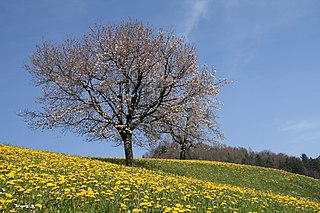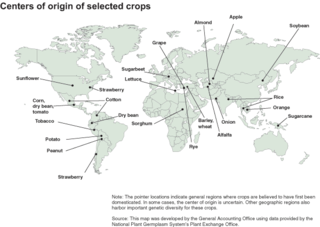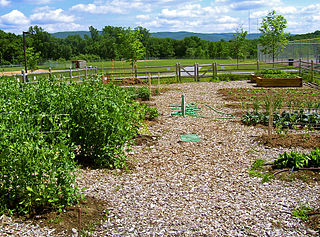 W
WThis is an index of agriculture topics.
 W
WThis is a list of undomesticated or feral plants, generally considered weeds, yet having some positive effects or uses, often being ideal as companion plants in gardens.
 W
WChaudhary Charan Singh Haryana Agricultural University is a public funded agricultural university located at Hisar in the Indian state of Haryana. It is one of the biggest agricultural universities in Asia. It is named after India's seventh prime minister, Chaudhary Charan Singh.
 W
WThis is a list of farms in Cornwall. Cornwall is a ceremonial county and unitary authority area of England within the United Kingdom.
 W
WThis is a list of plants that have been domesticated by humans. The list includes individual plant species identified by their common names as well as larger formal and informal botanical categories which include at least some domesticated individuals. Plants in this list are grouped by the original or primary purpose for which they were domesticated, and subsequently by botanical or culinary categories. Plants with more than one significant human use may be listed in multiple categories.
 W
WThis list contains the names of fruits that are considered edible either raw or in some cuisines. The word "fruit" is used in several different ways. The definition of fruit for this list is a culinary fruit, i.e. "Any sweet, edible part of a plant that resembles fruit, even if it does not develop from a floral ovary; also used in a technically imprecise sense for some sweet or semi-sweet vegetables, some of which may resemble a true fruit or are used in cookery as if they were a fruit, for example rhubarb." Many edible plant parts that are true fruits botanically speaking, are not considered culinary fruits. They are classified as vegetables in the culinary sense, and hence they do not appear in this list. Similarly, some botanical fruits are classified as nuts, and do not appear here either. Even so, this list is otherwise organized botanically.
 W
WThe following is an incomplete list of fleshy fruits that may appear to be edible by humans, but are inedible. Some of them are poisonous, others are merely too unpalatable for consumption.
 W
WHoneybees usually collect nectar, pollen, or both from the following species of plants, which are called honey plants, for making honey.
 W
WAgricultural equipment is any kind of machinery used on a farm to help with farming. The best-known example of this kind is the tractor.
 W
WThe following list, derived from the statistics of the United Nations' Food and Agriculture Organization (FAO), lists the most valuable agricultural products produced by the countries of the world. The data in this article, unless otherwise noted, was reported for 2016. The value and production of individual crops varies substantially from year to year as prices fluctuate on the world and country markets and weather and other factors influence production.
 W
WThe nectar resource in a given area depends on the kinds of flowering plants present and their blooming periods. Which kinds grow in an area depends on soil texture, soil pH, soil drainage, daily maximum and minimum temperatures, precipitation, extreme minimum winter temperature, and growing degree days. The plants listed below grow in USDA hardiness zone 5. A good predictor for when a plant will bloom and produce nectar is a calculation of the growing degree days. Hopkins' bioclimatic law states that in North America east of the Rockies, a 130-m (400-foot) increase in elevation, a 4° change in latitude North (444.48 km), or a 10° change in longitude East will cause a biological event to occur four days later in the spring or four days earlier in the fall. In botany, the term phenology refers to the timing of flower emergence, sequence of bloom, fruiting, and leaf drop in autumn.
 W
WThe following outline is provided as an overview of and topical guide to organic gardening and farming:
 W
WThis page contains a list of useful plants, meaning a plant that has been or can be co-opted by humans to fulfill a particular need. Rather than listing all plants on one page, this page instead collects the lists and categories for the different ways in which a plant can be used; some plants may fall into several of the categories or lists below, and some lists overlap.
 W
WPoisonous plants are plants that produce toxins that deter herbivores from consuming them. Plants cannot move to escape their predators, so they must have other means of protecting themselves from herbivorous animals. Some plants have physical defenses such as thorns, spines and prickles, but by far the most common type of protection is chemical.
 W
WThe term pollen source is often used in the context of beekeeping and refers to flowering plants as a source of pollen for bees or other insects. Bees collect pollen as a protein source to raise their brood. For the plant, the pollinizer, this can be an important mechanism for sexual reproduction, as the pollinator distributes its pollen. Few flowering plants self-pollinate; some can provide their own pollen, but require a pollinator to move the pollen; others are dependent on cross pollination from a genetically different source of viable pollen, through the activity of pollinators. One of the possible pollinators to assist in cross-pollination are honeybees. The article below is mainly about the pollen source from a beekeeping perspective.
 W
WIn ancient Roman religion, agricultural deities were thought to care for every aspect of growing, harvesting, and storing crops. Preeminent among these are such major deities as Ceres and Saturn, but a large number of the many Roman deities known by name either supported farming or were devoted solely to a specific agricultural function.
 W
WAn edible seed is a seed that is suitable for human or animal consumption. Of the six major plant parts, seeds are the dominant source of human calories and protein. A wide variety of plant species provide edible seeds; most are angiosperms, while a few are gymnosperms. As a global food source, the most important edible seeds by weight are cereals, followed by legumes, nuts, then spices.